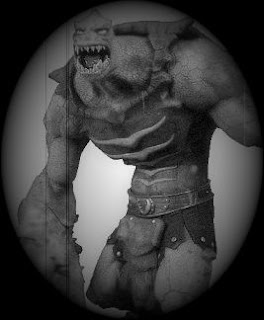Following up on my earlier post, here are the are some of the background occupations for adventurers I plan on using in my own upcoming Weird Adventures game. These backgrounds suggest the broad, noncombat skills character’s will have. For skill checks, I plan to use a "Target20" sort of mechanic, wherein d20 plus appropriate modifiers must be greater then or equal to “20” to succeed. Using a skill within the purview of the the background will garner an additional +1 in addition to the pertinent ability score bonus on the skill check.
All of this will require a good deal of GM discretion. I will probably allow two background occupations if a player had a real good concept. Bonuses in that context wouldn’t “stack” though, if they happened to have similar skill sets.
It should also be noted that, with a few exceptions, I view any class as able to take any background occupation (though some would be a better "fit" for one or another), though that will modify the nature of that occupation somewhat. A Tough Guy scientist is a “Two-Fist Scientist” while a Magic Man amateur detective becomes a “Occult Detective.”
Anyway, here are a few examples:
Academician [requires Int 12+]
The Ivory Halls of Academia didn’t hold enough excitement for you--or perhaps your hunger for knowledge ran to topics not considered appropriate by those in your department. When you’ve proved your theories, they’ll have to listen. Skills: Academicians will have a primary field of study, and some knowledge of related fields. They’re probably just well-read in general.
Big Game Hunter
You’ve tracked tigers through Lemurian ruins, and bagged woolly mammoths in the snow-bound wastes of Borea, but some of the biggest, deadliest beasts can be found closer to home...
Skills: A hunter will know the habits and characteristics of animals he follows, and be able to follow their tracks and sign.
Dilettante
There’s only so many hours you can spend at the club or charity events before the ennui becomes unbearable. It’s adventure you crave! That and another glass of single malt.
Skills: Etiquette and savior faire. The dillettante (unlike the socialite) has dabbled in various subjects and has a good chance of having a superficial knowledge about an array of topics.
Gangster
There are guys who are good to have around in the event there is a need to get physical, but guys like that are apt to get other guys sore at them. And when those other type of guys get sore, morticians get busy. Sometimes, guys of the aforementioned first type maybe oughta decide a change of career is in order. You, my friend, are a guy of the first type.
Skills: Gangsters are likely to known the prominent criminals in town, and locales related to criminal activity.



















































